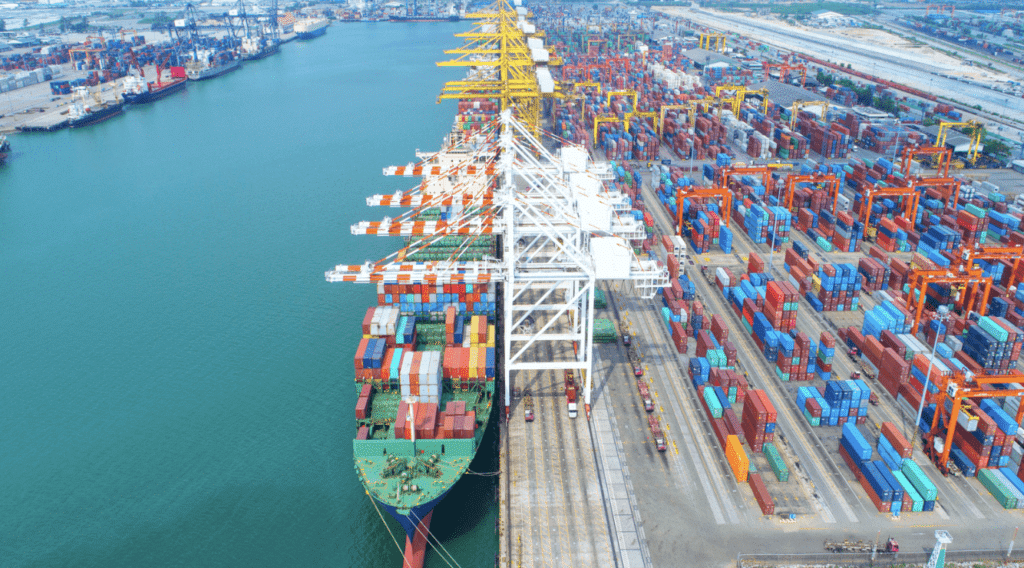How New Technologies Can Help Global Supply Chains Build Resilience
It’s been a harrowing few years for the logistics industry. While the situation has somewhat improved, companies around the world are now confronting rising fuel costs, a worsening climate crisis and increasing inflation. All just in time for the holiday season, a period that stresses supply chains even in normal conditions.
As with any crisis, there are lessons and opportunities that emerge in the aftermath. Companies have begun analyzing their operations and preparing them to be more resilient, hoping new technologies for manufacturing and operating supply chains might prevent widespread delays, bottlenecks and frustrations. Venture capitalists have taken notice of this activity and are scrambling to fund any idea that might ease logistical pain points. This year alone, supply chain startups received over $7 billion from investors globally, including a $935 million raise by supply chain software provider Flexport. It’s estimated that before the end of this decade, VC funding for “supply tech” will overtake that for fintech.
While every industry is different, many improvements to global supply chains involve methods to increase efficiency, cut down on human labor and keep costs low, using tools like warehouse management, matching freight loads to transportation capacity and cost-effective routing. Here are examples of how several industries are approaching supply chain transformations.
1. Retail Supply Chains
Retailers are uniquely vulnerable to supply chain problems, often burdened with excess inventory that requires “deal days” to make room. A successful retail strategy includes “demand forecasting”—careful analysis of what customers will want, where they’ll want it and when.
But according to McKinsey, “the pandemic has rendered traditional techniques ineffective, since those techniques rely heavily on a company’s historical sales data rather than on forward-looking external data. Some manufacturers, therefore, couldn’t react fast enough when consumers shifted most of their spending away from brick-and-mortar stores toward e-commerce.”
The solution, as McKinsey notes, may lie in autonomous planning. This allows machines to do advanced analytical work while humans can spend their time on higher-value activities, resulting in a faster, more streamlined process.
2. Energy Supply Chains
A Gartner study, as cited by VenureBeat, found that “84% of chief supply chain officers reported they could service their customers better with data-driven insights. And an equal number stated that they needed more accurate data to predict future conditions and make better decisions.
For oil and gas companies, most contract management, risk negotiation and vendor management are multi-step processes involving a lot of data. Leaders in the industry are updating their data management capabilities to provide increased visibility into their systems.
3. Hospitality Supply Chains
Suppliers are facing increased scrutiny over their emissions, and supply chain efficiency is now balanced with environmental responsibility. Among the ways technology is helping hospitality companies maintain a responsible supply chain are: supply chain mapping (allowing companies to rapidly react when a supplier faces a shortage, an order gets lost or there’s a demand surge), monitoring ESG metrics (analyzing supplier practices) and coordinating transportation flows (ensuring a minimal carbon footprint).
4. Healthcare Supply Chains
In healthcare, the supply chain is responsible for issues like medical supply procurement, inventory management and overall spend management. According to Deloitte, many healthcare companies are not only improving their supply chains; they’re digitizing them.
Digital supply chains have many benefits for healthcare companies, including optimizing costs, reducing poor outcomes due to error and variability and enhancing patient care and engagement (i.e., reducing wait times and reducing rescheduled appointments).
Best Practices: Things To Consider On The Road Ahead
Companies interested in updating, digitizing or overhauling their supply chain operations have to consider how to balance challenges. Simply bringing on new technology is not a cure-all, and any change comes with risk.
With that in mind, here are practical steps organizations can take to get started.
• New supply-chain technology has a learning curve. Companies struggle to integrate new technologies for many reasons, and the supply chain is not immune. How companies engage employees during a transition is a big indicator of success, and it’s also important to educate the team along the way. Predictive analytics, automation and digitized platforms are already making supply chains more efficient and cost-effective—but employees need to know how to use the tech. When deciding on how/if to implement supply chain technology, look for servant leaders who can reduce the learning curve for others. A common mistake is bringing on vendors or consultants with no stake in the mission. By fostering an atmosphere of continuous learning, companies stand a greater chance of creating long-term value.
• Team engagement is crucial, and reskilling/hiring will be necessary. Rapid technology advancements and an increasingly globalized world have accelerated the need for skilled workers. A study from Deloitte found that less than 40% of supply chain leaders were confident in their current team’s abilities. And demand has only increased as companies continue to go digital. Before any transformation, it’s important to have a solid understanding of where skills gaps exist. By engaging with everyone from the C-suite to the support team, companies can gain critical insights into their ability to manage new supply chain technology. Begin the process early because it will take some time to audit, recruit, hire and onboard new talent.
• Digitizing the supply chain can impact different parts of the business. Supply chain leaders need to understand how their current infrastructure operates in order to bring on new technology. While that may sound intuitive, companies can be siloed or blind to how their function interacts with other parts of the business. Because the supply chain touches many different areas, companies should set up key performance indicators (KPIs) to analyze strengths and identify inefficiencies. Be honest about the goals for any transformation, and align the KPIs to parts of the business that are likely to show impact.
We’ve been shown just how fragile our interconnected global marketplace can be when unexpected events occur, and supply chains are growing increasingly complex. The hope is that with logistics investments and innovation, companies will be better prepared to provide the products that consumers want and need, even in times of crisis.
Article originally published of Forbes Technology Council December 19th, 2022.



